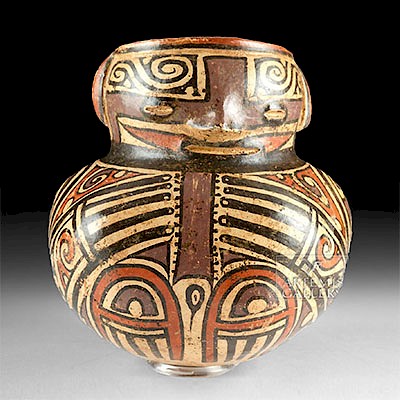Scythian 18K+ Gold Animal / Leopard Applique
Lot 42b
About Seller
Artemis Fine Arts
686 S Taylor Ave, Ste 106
Louisville, CO 80027
United States
Selling antiquities, ancient and ethnographic art online since 1993, Artemis Gallery specializes in Classical Antiquities (Egyptian, Greek, Roman, Near Eastern), Asian, Pre-Columbian, African / Tribal / Oceanographic art. Our extensive inventory includes pottery, stone, metal, wood, glass and textil...Read more
Categories
Estimate:
$1,000 - $1,500
Absentee vs Live bid
Two ways to bid:
- Leave a max absentee bid and the platform will bid on your behalf up to your maximum bid during the live auction.
- Bid live during the auction and your bids will be submitted real-time to the auctioneer.
Bid Increments
| Price | Bid Increment |
|---|---|
| $0 | $25 |
| $300 | $50 |
| $1,000 | $100 |
| $2,000 | $250 |
| $5,000 | $500 |
| $10,000 | $1,000 |
| $20,000 | $2,500 |
| $50,000 | $5,000 |
| $100,000 | $10,000 |
| $200,000 | $20,000 |
About Auction
By Artemis Fine Arts
Nov 8, 2018
Set Reminder
2018-11-08 10:00:00
2018-11-08 10:00:00
America/New_York
Bidsquare
Bidsquare : Ancient / Ethnographic From Around The World
https://www.bidsquare.com/auctions/artemis-gallery/ancient-ethnographic-from-around-the-world-3598
Ancient art from Egypt, Greece, Italy and the Near East, as well as Asian, Pre-Columbian, Native American, African / Tribal / Oceanic, Spanish Colonial, Russian Icons, Fine art, much more! Artemis Fine Arts info@artemisgallery.com
Ancient art from Egypt, Greece, Italy and the Near East, as well as Asian, Pre-Columbian, Native American, African / Tribal / Oceanic, Spanish Colonial, Russian Icons, Fine art, much more! Artemis Fine Arts info@artemisgallery.com
- Lot Description
Western Asia, Scythian culture, ca. mid 1st millennium BCE. A fascinating gold applique (more than 18 karat gold) in the form of a rearing quadruped with its legs curled up and a short, snubbed snout. The animal also has a triangular ear and a long, thin tail that rises along the back. This is probably a leopard or another type of feline. Delicate hooks on the hollow reverse show how it would have been attached to a piece of clothing. The Scythians are famous for their goldwork, and rightly so; hoards of their treasures have been found throughout eastern and central Europe and western and central Asia. These hoards may represent gifts that were made to foreign rulers, votive offerings, or treasures buried and forgotten. Other gold artifacts from this culture are found in their incredibly rich graves. According to Scythian tradition, warriors (both male and female) were buried alongside their servants and horses, with weapons, harnesses, and personal adornments to provide for them in the afterlife. Size: 0.8" W x 0.8" H (2 cm x 2 cm); 2.4" H (6.1 cm) on included custom stand.
Provenance: private Davis collection, Houston, Texas, USA
All items legal to buy/sell under U.S. Statute covering cultural patrimony Code 2600, CHAPTER 14, and are guaranteed to be as described or your money back.
A Certificate of Authenticity will accompany all winning bids.
We ship worldwide and handle all shipping in-house for your convenience.
#140296Snout is slightly bent, giving it a foreshortened appearance. With a glowing gold patina. Attached to stand with putty, but probably removeable. Unable to weigh since attached to stand. Old inventory label on back of stand base.Condition
- Shipping Info
-
All shipping is handled in-house for your convenience. Your invoice from Artemis Gallery will include shipping calculation instructions. If in doubt, please inquire BEFORE bidding for estimated shipping costs for individual items.
-
- Buyer's Premium



 EUR
EUR CAD
CAD AUD
AUD GBP
GBP MXN
MXN HKD
HKD CNY
CNY MYR
MYR SEK
SEK SGD
SGD CHF
CHF THB
THB













